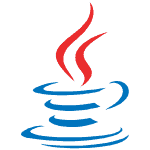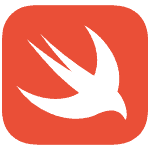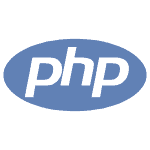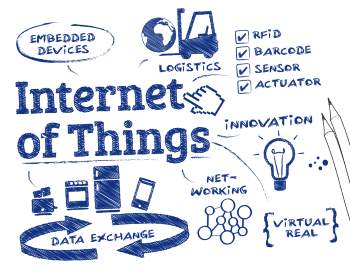Top 8 Programming Languages for IoT (with Examples)

One of the biggest tech trends to grace the scene of the tech industry is the Internet of Things, often abbreviated as IoT. IoT simply means connecting all the things in the world to the internet and to each other to create a perfect interconnection between the physical and the digital world. You can find a detailed overview of IoT here.
This article’s focus is on the top 8 programming languages for Internet of Things. Let’s first get a few basics out of the way.
In an IoT architectural environment, there are three major sections involved: the sensors, the local gateway hubs, and the centralized servers – all in constant communication over the internet. An IoT setup involves a collection and management of vast amounts of data.
The data comes from the sensors embedded in the IoT devices. The gateway hubs pick the data from the sensors and organize it, then shares it with other IoT devices on the network for real-time decisions; or sends the data to the server for advanced analysis and storage.
An example of such an architecture is a smart home monitoring system. When the light sensor detects that it’s getting dark, it sends the data to the gateway hub, which sends a signal to your bulbs to light up the compound.
For this autonomous process to work, a software program is required to manage the interconnection and flow of data between the various devices on the network. So, what languages do we use to write such a program?
You will be surprised that the languages used to program IoT devices are the same as those used to write code for ordinary web, mobile, and desktop applications. Hence, choosing a programming language for an IoT project is the same as choosing a programming language for any development project.
The Eclipse IoT Foundation project lists the top four IoT languages like Java, C, JavaScript, and Python. But these are not the only languages; here are the top 8 programming languages for an IoT project.
1. C

C is a major programming language not only for IoT but also the entire software ecosystem. It’s a lower level programming language for writing software closest to the hardware. Most coding languages are based on the foundation of C language – other languages run on top of a C platform. Basic sensors work directly with the C language.
C is the language used to program microcontrollers – those embedded CPUs that control the IoT devices. If you are going to work on IoT projects, then mastering the C language will be a necessity as it is the most popular coding language for the embedded devices.
Examples of devices using the C language is Arduino circuit board – a platform enabling users to create interactive electronic objects. C is a procedural programming language.
Advantages of using C language for IoT
- It is the foundation for other programming languages.
- It’s highly portable, hence used in most embedded devices.
- The C language can extend itself.
- It’s fast since it is a compiled language and runs directly on the hardware.
2. C++

C++ is directly derived from C language, with some improvements added. C++ boasts better efficiency and productivity. Moreover, it is an object-oriented language hence more powerful than the C language. Just like C language, it can be used to writing code for Arduino circuit boards that control other electronic objects. C++ is also used to write code for microcontrollers on small IoT sensors.
Advantages of using C++ language for IoT
- Since it is an objected oriented language, it enables layers of objects and abstractions.
- It’s fast since it is a compiled language and runs directly on the hardware.
- It is good for developers looking to extend their programming code for IoT since it allows the use of other languages on top of it, including Java, Python, C#, and more.
- Allows tight control over every aspect of the program.
3. Java

Java is one of the most popular programming languages with a massive support on developer communities. If you are just getting into IoT project development, Java can be a good start as you can learn it easily.
Java offers network portability hence the perfect language for ensuring two or more devices can communicate. Java is highly interoperable – the architectural design of IoT involves a cluster of technologies including sensors, cloud computing, big data, servers, and various hardware; Java code can run on all these technologies.
Technically, Java can bring all these devices together making it the best choice for IoT. While Java has evolved over time, it offers backward compatibility with ease. Billions of devices run Java including routers, smart meters, ATMs, Smartcards, Android wearables, etc.
Advantages of using Java language for IoT
- It’s platform independent since it runs on top of other platforms written in C or C++ hence highly flexible and versatile.
- It gives an enhanced user experience.
- It is comparatively cheaper to support it.
- One of the most used languages hence massive community support in case you get stuck.
- It gives an enhanced user interface.
- Offers network portability.
- It’s secure and stable hence ensuring a high level of network security which is required for IoT devices.
- It has an extensive in-built library of APIs that shortens the development time.
- Its interoperability allows it to run not only on large servers with immense power and capacity but also on small embedded IoT devices with limited CPU and memory.
4. Python

Python is a multipurpose programming language which was initially focused on web applications development. That has since changed, thanks to a strong developer community that has supported its evolution.
Python is easy to learn and mostly preferred because of its simple syntax that emphasizes code readability. It supports multiple programming paradigms including object-oriented, procedural, functional programming, logic programming. It has comprehensive data mining capabilities hence perfect for use in devices that involve lots of big data analytics.
It is used in fitness tracking gadgets because of the data processing involved. It can also be used in kids or pets tracking devices. Amazon provides Alexa Skills SDK that allows developers to create applications that integrate with Alexa using the Python language.
Raspberry Pi, is one of the most popular microcontroller boards that use python as the main programming language. A subset of Python for compact microcontroller circuit boards exits, called MicroPython. The MicroPython Pyboard is a compact microcontroller – a few square centimeters, that runs MicroPython. These microcontrollers allow developers to write code for controlling other IoT devices.
Advantages of using Python language for IoT
- It has many in-built and extended libraries hence shortening the development time.
- It has a simple and clean syntax that is easy to learn, implement and deploy.
- It is portable and platform independent hence supporting a wide range of single-board computers.
- It’s a highly popular language with a huge developer community which provides libraries and support whenever you are stuck.
5. JavaScript

JavaScript is a ubiquitous programming language. While it started out as a simple scripting language for popping up alert boxes, it’s now found everywhere; from the web, mobile applications, desktop applications, TV, and even server-side programming.
The dynamic user interfaces you see on websites depend on JavaScript. Given that it requires a virtual engine to run when it comes to IoT, JavaScript is mostly used in gateway hubs for aggregating data, and on the server for storing the data. Some hubs and sensors with Linux Operating System can run Node.js which is a prerequisite for running JavaScript code.
Efforts are underway to port Node.js to smaller devices to fit IoT purposes. For instance, we already have microcontrollers entirely running JavaScript, this is Espruino and Tessel. Tessel is an Arduino like circuit board built around Node.js. Developers can interact with other IoT devices by only using JavaScript code. Each Tessel module has an open source NPM library. Espruino uses JavaScript directly.
Advantages of using JavaScript language for IoT
- JavaScript is a highly developed programming language with vast learning resources.
- Given its ubiquitous nature, it’s one of the programming languages commanding a large userbase – meaning you will always have help whenever you’re stuck.
- It has a vast availability of libraries, client-side and server-side development frameworks, prototyping tools, and more. This will largely shorten the development time.
- It has Node.js support hence access to the NPM – an intelligent package manager for JavaScript dependencies.
- One language for the controller, gateway, server and web interface – means a development team needs to only know JavaScript to implement a complete IoT project.
- On the server-side, JavaScript is suitable for creating an event based server that is fast for handling input-output requests. This is necessary for real-time apps to work. For example, location tracking sensors, maps navigation, etc.
6. Go

Go or Golang is a low-level language that was developed by Google. It is syntactically similar to C but with improvements added. Unlike C, it has implementations for memory safety, garbage collection, and structural typing. It is a multi-paradigm language supporting concurrent, functional, imperative and object-oriented programming. Some devices supporting Go language include ARDrone, Arduino, Bluetooth LE, Dragonboard, Intel Joule, Leap Motion, and more.
Advantages of using Go language for IoT
- It’s a low-level language that allows devices to interconnect and share data on many channels simultaneously.
- With Google’s support, it continues to evolve with more functionalities and support expected in the future.
- Gobot is a framework written in the Go programming language for robots, drones, and IoT to help get more done in less time.
7. Swift

Swift is the main programming language for developing MacOS and Apple iOS apps. Apple has been growing into the smart home industry with the goal of becoming a leader in smart home gadgets. As a result, they are working on libraries and SDKs for developers.
If you plan to interact with Apple’s central home hub or work on IoT devices that interact with it, then Swift is the language for this purpose. Apple TV is an example of an IoT device that uses swift for its apps.
Advantages of using Swift language for IoT
- Apple wants to be a leader in the home automation industry. This means, there’s a massive support towards the Swift language.
- Supports dynamic libraries, cutting down on the size of the app and ultimately increasing performance. It makes it possible to install sensors with limited resources.
- Swift’s performance can be compared to that of C++ which is considered to make some of the fastest algorithms.
8. PHP

PHP has prominence on the web. In a research carried out by W3Techs, of all websites involved in the report, 79.0% were found to use PHP. The language is popular and it’s already finding usages in the IoT industry. PHP being an interpreted language, it requires a server to run. This means embedding a server stack such as XAMPP on a device. Because of this reason, PHP may not be appropriate for small sensors. In an IoT architectural setup, PHP is mostly used to handle the server side logic, like updating and retrieving data from databases.
In recent developments, the developers of Raspberry Pi are considering ways to port PHP on the circuit board. Raspberry Pi runs Linux, hence a LAMP stack can be installed to run on top of Linux. The LAMP stack which is a server can provide the environment necessary for PHP to run. From this point, PHP developers can write code that runs on the Raspberry Pi and controls other electronics.
Advantages of using PHP language for IoT.
- The syntax is easy to learn.
- Given its popularity, it has large support from a community of developers hence you will always get answers when stuck.
- Relatively cheap to maintain PHP projects.
- Gets the job done quickly thanks to some readily available libraries.
Final Thoughts
As IoT usage increases, probably more programming languages will join the ecosystem, giving developers more options. Additionally, more data continues to be collected on how users engage with the IoT device.
With big data analytics, we will know which language is better for which IoT product or service. All the languages listed above are appropriate for specific IoT projects. When choosing a language, it boils down to what language supports the end-use of the applications, and whether it helps you as a developer meet the specific needs of the application.




